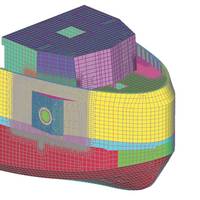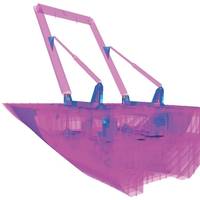Finite Element Strength Analysis for ATB Load Box

The loading and response dynamics of an Articulated Tug & Barge (ATB) load box are complex. They typically require advanced finite element analysis methods and procedures to design an efficient support structure to ensure a durable design and to facilitate meeting Class strength requirements. To study the dynamic response of the loads imparted on the tug from the barge, a finite element analysis (FEA) is carried out. Loading conditions that include the static sea pressure, gravity loads, and reaction forces from the ATB Coupler are incorporated into the FEA analysis.
MN100: Viking Systems International, Inc.

Viking Systems International is a worldwide leader in the advanced design, analysis and 3rd party verification of structures, focusing on the offshore oil and gas industry, commercial ship business, and the military and defense community. Viking executes advanced structural design, analysis, 3rd party verification and FEA engineering services. Viking Systems’ core structural assessment software, SAGA, integrates regulatory body requirements by applying world class state-of-the-art software…
New CSR Structural Assessment Software Released
Classification society ClassNK announced the release of the latest versions of IACS Common Structural Rules (CSR) structural assessment software. PrimeShip-HULL(Rules)/CSR is software designed to perform structural evaluations using the scantling formulae defined in the CSR. This software possesses a number of powerful functions such as user friendly interfaces and result displays. This software can be used for both bulk carriers and tankers. PrimeShip-HULL(DSA)/CSR is software designed to perform the direct calculations defined in the CSR. Using FE models, users can easily execute complicated FEM analyses through the use of special features like the automatic identification of structural members and compartments.





